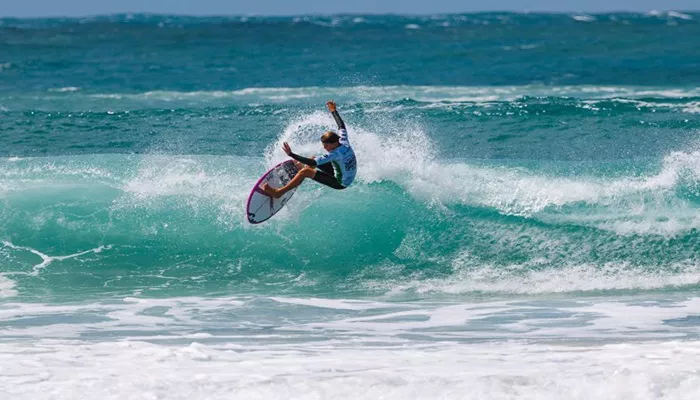Surfing massive waves is one of the most exhilarating and dangerous activities in extreme sports. When waves reach heights of 20, 50, or even 100 feet, the power of the ocean becomes almost unimaginable. Yet, professional big wave surfers continue to push the limits, riding these giants without drowning. How do they do it? What techniques, training, and equipment help them survive these monstrous waves? This article explores the methods surfers use to stay safe in the face of towering waves.
Understanding the Dangers of Big Wave Surfing
Before diving into survival techniques, it’s important to understand why big wave surfing is so dangerous. Here are some key risks surfers face:
Hold-Downs: After a wipeout, surfers can be held underwater by successive waves, sometimes for over a minute.
Impact Force: The sheer force of a massive wave can slam a surfer against the ocean floor or break bones.
Rip Currents: Strong currents can drag surfers far from their surfboards or safety teams.
Oxygen Deprivation: Panic and physical exertion can quickly deplete oxygen levels.
Equipment Failure: Losing a surfboard or breaking a leash in big waves can be life-threatening.
To counter these risks, surfers rely on training, technology, and teamwork to stay alive.
1. Breath-Holding and Lung Capacity Training
One of the biggest dangers in big wave surfing is being held underwater for extended periods. To prepare for this, surfers undergo rigorous breath-holding training.
Breath-Hold Techniques
Static Apnea Training: Surfers practice holding their breath while remaining still to improve lung capacity.
Dynamic Apnea Training: This involves holding their breath while swimming to simulate real wipeout situations.
CO2 and O2 Tables: These training methods help the body adapt to high carbon dioxide levels and low oxygen conditions.
Underwater Workouts: Some surfers perform strength exercises like lifting weights or swimming underwater while holding their breath.
By improving their breath control, surfers can stay calm and conserve oxygen during long hold-downs.
2. Staying Calm Under Pressure
Panic is a surfer’s worst enemy in big waves. The more a surfer struggles, the more oxygen they burn.
Techniques to Stay Calm
Mental Conditioning: Surfers practice meditation and visualization techniques to prepare for wipeouts.
Experience: The more wipeouts a surfer experiences, the more they learn to remain calm in extreme situations.
Slow Exhalation: Instead of hyperventilating, surfers exhale slowly to maintain oxygen levels and keep heart rates low.
3. Safety Equipment That Saves Lives
Modern advancements in surf technology have greatly improved survival rates in big wave surfing.
Inflatable Safety Vests
These vests have CO2 cartridges that, when activated, inflate to bring the surfer to the surface.
Popular among big wave surfers, these vests provide an added layer of safety during extreme wipeouts.
Leashes and Strong Surfboards
Thicker, reinforced leashes prevent surfers from losing their boards, which act as flotation devices.
Big wave surfboards (guns) are longer and heavier, helping surfers paddle into massive waves more efficiently.
Jet Ski Rescue Teams
Professional big wave surfers often have safety teams on jet skis ready to rescue them after wipeouts.
These teams help surfers return to shore quickly, reducing exhaustion and risk.
4. Wave Knowledge and Spot Selection
Understanding how waves break and where to position oneself is critical for safety.
Reading Waves
Big wave surfers analyze how waves break to determine where to enter and exit safely.
Understanding wave energy helps them avoid getting caught in the most dangerous sections.
Identifying Escape Zones
Every big wave spot has safer zones where surfers can paddle out of danger.
Knowing these escape routes can make the difference between surviving a wipeout and being caught inside.
5. The Role of Physical Conditioning
Big wave surfers train like elite athletes to withstand the extreme forces of the ocean.
Cardiovascular Training
Surfing massive waves requires endurance. Surfers do swimming, running, and cycling to improve lung and heart capacity.
Strength Training
Upper body and core strength help surfers paddle quickly and maintain balance in powerful waves.
Leg strength is crucial for absorbing impact during landings and turns.
Flexibility and Mobility
Yoga and stretching help surfers maintain agility, which is essential for quick reactions in the water.
6. Experience and Preparation
No surfer starts by riding 50-foot waves. Years of experience in smaller waves help surfers develop the skills needed to survive bigger surf.
Gradual Progression
Surfers start with smaller waves and work their way up to bigger ones.
They practice wipeouts in controlled conditions to understand how to react under pressure.
Practicing in Dangerous Conditions
Some surfers train in heavy surf zones to get comfortable with extreme conditions.
Training in rough water builds confidence and muscle memory.
Conclution
Surviving big waves is a combination of skill, preparation, training, and equipment. Through breath-holding exercises, mental conditioning, and physical training, surfers develop the ability to endure extreme wipeouts. Safety vests, jet ski teams, and strong boards provide additional layers of protection. Most importantly, knowledge of the ocean and years of experience help surfers make split-second decisions that can save their lives.
Big wave surfing is not for the faint-hearted, but for those who dedicate themselves to mastering the craft, the reward is an experience unlike any other—riding the raw power of the ocean and pushing human limits in one of the most extreme sports on Earth.

